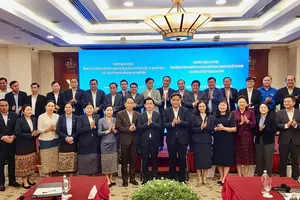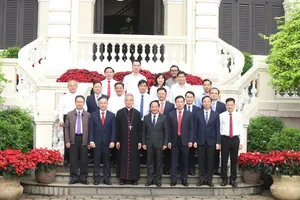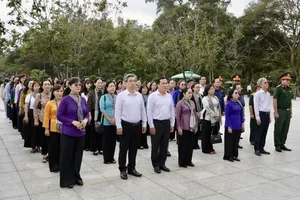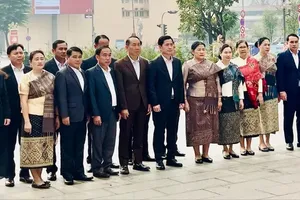This is an important basis for the city and districts to determine that they should pour investment into technical infrastructure systems; thereby, forming satellite urban areas.
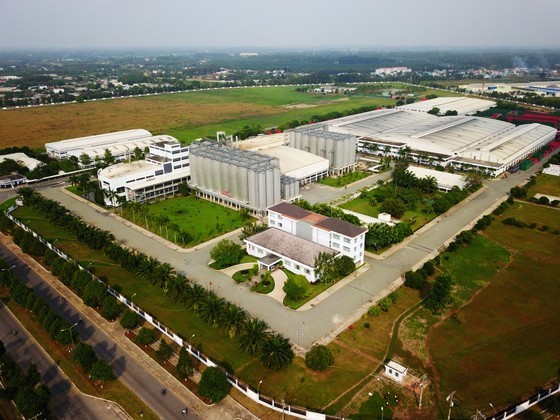 |
Hiep Phuoc port |
Recently, new urban areas which will be satellites for existing urban areas have been planned by the city. However, due to some objective factors and a lack of financial resources, many new urban areas are not formed.
Typically, the Northwest Urban Area has been planned since 2007 in the northwest of the city, stretching across the outlying districts of Cu Chi and Hoc Mon with an area of about 6,000 hectares, but over the past 15 years, it has not been able to develop as expected.
In the southern part of the city, Hiep Phuoc urban area in Nha Be district is planned on 1,354ha in the overall 3,900ha Hiep Phuoc port urban area which is also immovable because no investor agreed to pour investment. This is a new multi-functional urban area with the characteristics of a port city that is designed to adapt to climate change and sea level rise, creating conditions to expand the city's urban space to the sea.
Currently, the administrative center of Binh Chanh district in the western area is considered the most developed urban area of this district.
Particularly, Can Gio district with a 2,970ha urban area encroaching on the sea of Can Gio will be the main development direction of the city in the near future.
In the Department of Planning and Investment’s project on the orientation of urban infrastructure development in the suburban districts of Ho Chi Minh City, four urban areas including the Northwest Urban Area, Hiep Phuoc, Binh Chanh in the North, and Can Gio will be the first of urban areas in the city. They will make a breakthrough role in suburban districts and are developed according to the model of a suburban city, also known as a satellite city.
According to Head of the Ho Chi Minh City Department of Planning and Architecture’s General Planning Management Division Nguyen Anh Tuan, based on the assessment of natural, and socio-economic conditions, service connection, employment and accommodation as well as quality with local infrastructure, the satellite urban areas formed should attract large-scale urban development projects.
On this basis, the HCMC Department of Planning and Architecture has recommended that the People's Committee continue to review and complete the regional planning, and district construction planning and establish a list of adjustments to suburban area planning for the management of sustainable development plus proactive speeding up the progress of district planning.
Simultaneously, the HCMC Department of Planning and Architecture suggested linking the district construction planning with the process of promulgating policies on organization and implementation and solutions for construction investment deployment.
The People's Committee of Ho Chi Minh City should regularly update and publish information on new development projects, and plans for the city and district in land use so that people understand and take turns to monitor the exploitation of the land fund in accordance with the project's progress for ensuring the development of industrial parks in sync with planning, housing development and social infrastructure conditions.
Expectation of Can Gio sea encroachment tourist urban area
In 2018, the People's Committee of Ho Chi Minh City approved the zoning plan at the scale of 1/5000 of the 600ha Can Gio sea encroachment tourist urban area in Long Hoa Commune and Can Thanh town of Can Gio outlying district. By June 2020, the Prime Minister decided to approve the adjustment of the investment policy to expand the Can Gio sea encroachment tourist urban project from 600ha to 2,870ha, with a total investment of more than VND217,000 billion.
According to the Prime Minister's decision, the project implementation period is 50 years from July 11, 2007 for an area of 600ha and 50 years for the scale expansion from the date of approval of the investment policy. The implementation progress is guaranteed for about 11 years from the date of signing the decision to adjust the investment policy.
In February 2021, the People's Committee of Ho Chi Minh City issued 4 decisions approving the detailed planning task at the rate of 1/500 of the Can Gio sea encroachment tourist urban area. In early 2023, the People's Committee in Can Gio district agreed for the Can Gio Urban Tourism Joint Stock Company to build a temporary fence to serve the construction of the Can Gio sea encroachment tourist urban project.
Previously, in September 2022, the Ho Chi Minh City Party Committee issued a Resolution on the development orientation of Can Gio district to 2030. City authorities determined that by 2030, Can Gio district will basically become a resort city and ecotourism with the aim to increase the average total production value of the district from 2021 to 2030 by 20.7 percent per year.
Accordingly, by 2030, the proportion of services will account for 74.7 percent of total production value and per capita income will reached VND182 million yearly.
The City Party Committee of Ho Chi Minh City determines that it is necessary to effectively implement the sustainable development strategy of Can Gio Mangrove Biosphere Reserve in the period of 2021-2030, with a vision between 2030 and 2040 so that Can Gio will become a model of harmony between conservation of biodiversity and natural ecosystems with improved livelihoods and living quality of communities, green and sustainable economic growth.
Accelerating connectivity infrastructure projects
According to the city Department of Planning and Architecture, in order to develop suburban districts associated with secondary centers according to the model of satellite urban or peripheral urban areas, the Northwest urban area and Can Gio outlying district will depend on the progress of traffic projects connecting urban railway lines, ring roads and expressways.
The Hiep Phuoc port urban area is a potential area because it is close to the city center. Investment in infrastructure for fast connection in the direction of vertical (urban railway and national railway) and horizontal connection (Ring 4 road) is necessary to attract huge investment projects. Breakthrough development of the pioneer urban area of Hiep Phuoc port is needed to pave the way for large projects that can be implemented after 2030, along with strategic projects of quick connection for the region.
Binh Chanh district has the opportunity to develop the Western area to become a pioneer urban area; however, the lack of fast connection and the low value-added processing ecosystem will hinder the district’s further development.
According to the project on the orientation of urban infrastructure development in suburban districts of Ho Chi Minh City, the financial allocation for infrastructure investment in suburban districts in the 2021-2030 period is expected to be VND91,000 billion. The city has a chance to call for social contribution of VND110,000 billion; thus, the project investment will total about VND200,000 billion (equivalent to US$8 billion).
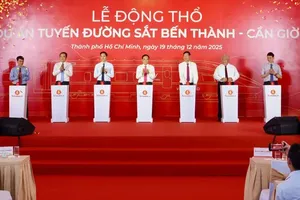


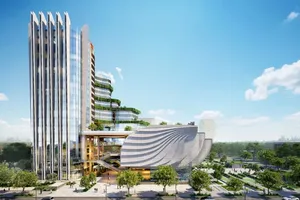
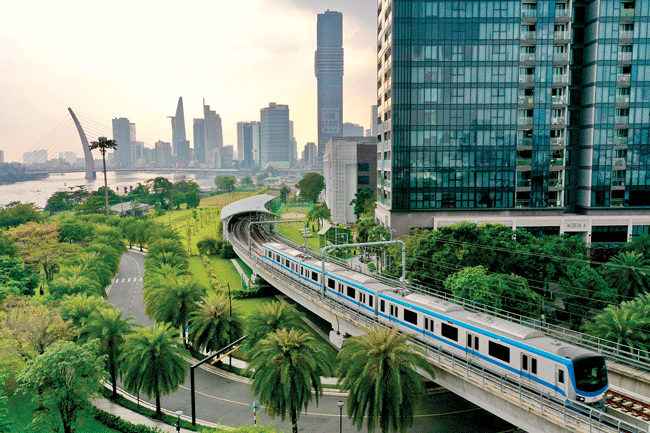



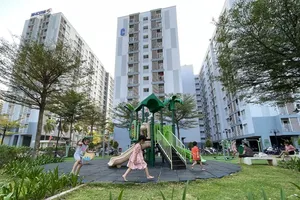

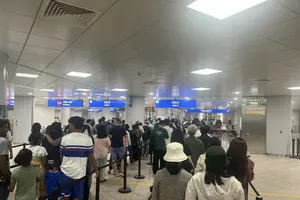
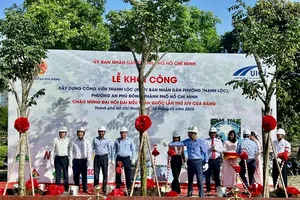

)
